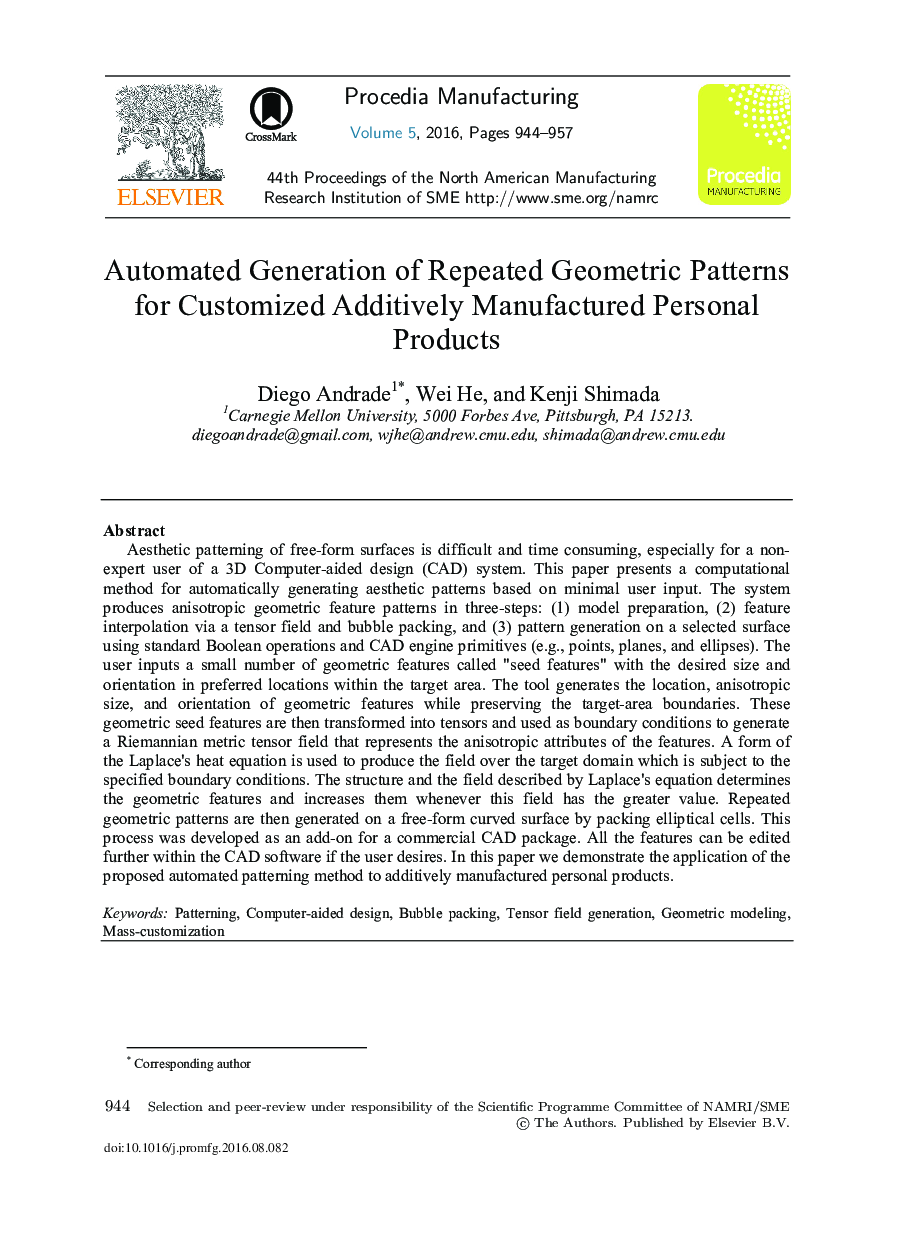| Article ID | Journal | Published Year | Pages | File Type |
|---|---|---|---|---|
| 5129076 | Procedia Manufacturing | 2016 | 14 Pages |
Aesthetic patterning of free-form surfaces is difficult and time consuming, especially for a non-expert user of a 3D Computer-aided design (CAD) system. This paper presents a computational method for automatically generating aesthetic patterns based on minimal user input. The system produces anisotropic geometric feature patterns in three-steps: (1) model preparation, (2) feature interpolation via a tensor field and bubble packing, and (3) pattern generation on a selected surface using standard Boolean operations and CAD engine primitives (e.g., points, planes, and ellipses). The user inputs a small number of geometric features called “seed features” with the desired size and orientation in preferred locations within the target area. The tool generates the location, anisotropic size, and orientation of geometric features while preserving the target-area boundaries. These geometric seed features are then transformed into tensors and used as boundary conditions to generate a Riemannian metric tensor field that represents the anisotropic attributes of the features. A form of the Laplace's heat equation is used to produce the field over the target domain which is subject to the specified boundary conditions. The structure and the field described by Laplace's equation determines the geometric features and increases them whenever this field has the greater value. Repeated geometric patterns are then generated on a free-form curved surface by packing elliptical cells. This process was developed as an add-on for a commercial CAD package. All the features can be edited further within the CAD software if the user desires. In this paper we demonstrate the application of the proposed automated patterning method to additively manufactured personal products.
